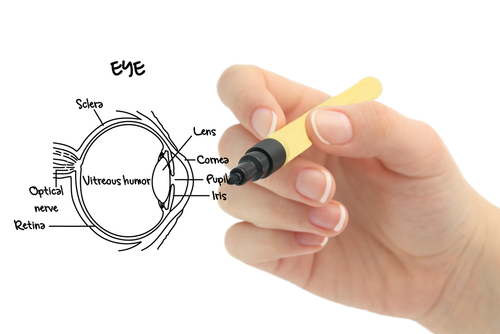A new Alcon study unveils much about this common vision problem.
While cataracts remain one of the most common age-related vision problems among seniors in America, very few people know the ins and outs of this vision problem. However, as the aging population continues to grow, it is more important than ever for seniors and their caregivers to understand cataract risks, symptoms, prevention and treatment options.
Cataracts themselves are the clouding of the eye’s lens which typically develop slowly, meaning that they may not be immediately apparent. Over time, this clouding can make it very difficult to focus light onto the eye’s retina, which is the light-sensitive tissue that sends images to the brain. The most common side effects of cataracts include vision that is cloudy, blurry, dull and dim, and they almost always interfere with daily activities.
To help further educate people about the impact of cataracts on our vision and how this vision problem can be treated, Alcon has partnered with AARP to educate consumers through a detailed infographic about cataracts and cataract surgery. Here are 11 of the most stand-out facts and figures from this study:
1. Cataracts affect more than 20.5 million Americans over the age of 40.
2. 50% of people have cataracts or have already had cataracts removed by the age of 80.
3. There are over 3 million cataract surgeries in the United States each year, making this procedure one of the most common surgeries in the country.
4. 95% of cataract surgery patients in the United States experienced improved vision following the procedure.
5. 75% of people over 50 say they want to overcome their cataracts in order to better enjoy their daily activities, while 90% of people over 50 say independence is extremely important to them.
6. 90% of people over the age of 50 drive, and most say that they would miss being behind the wheel more than anything else as a result of their eyesight diminishing. (54% of those surveyed said that they driver every single day, and 82% of those surveyed said that they drive at night―two activities that are very difficult to do once cataracts appear.)
7. In a telephone survey conducted by AARP and Alcon of 1,000 randomly selected AARP members, only 2 in 5 cataract patients plan to have surgery in the next two years. 44% of these cataract patients say they put off surgery because their vision is “fine for now,” while 14% of cataract patients say they are “fearful,” “scared” or “afraid” of surgery.
8. Luckily, 4 out of 5 people who underwent cataract surgery said that the overall experience was easier than they expected, with 2 out of 3 patients saying the surgery was not painful.
9. 85% of patients said that surgery addressed all or most of the problems they experienced before their cataracts were removed, and 2 out of 3 said they were less dependent on glasses for distance vision following surgery.
10. After cataract survey, 2 in 3 patients said they could read better (with or without glasses), 82% said it was easier to drive and 93% said they could see distant road signs better.
11. In the end, 2 out of 3 people surveyed said that they were surprised by how much improvement they experienced with their vision, and 88% said they would definitely recommend cataract surgery to their friends and family.
To see Alcon’s entire detailed infographic on cataracts, be sure to check out the Reclaim Your Vision website. Or to schedule your complementary cataract consultation today, be sure to contact OCLI.
